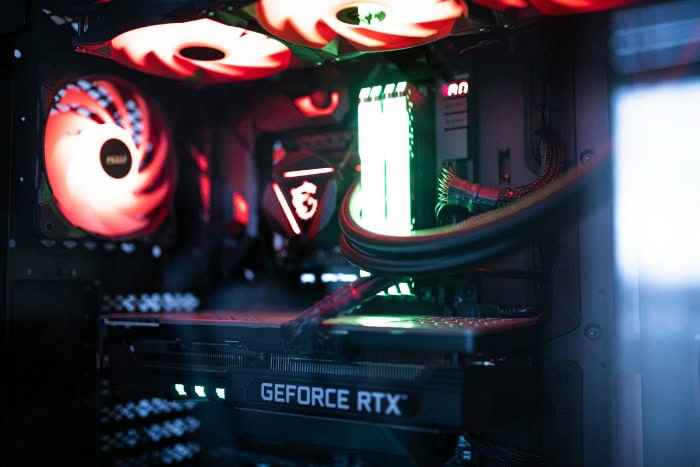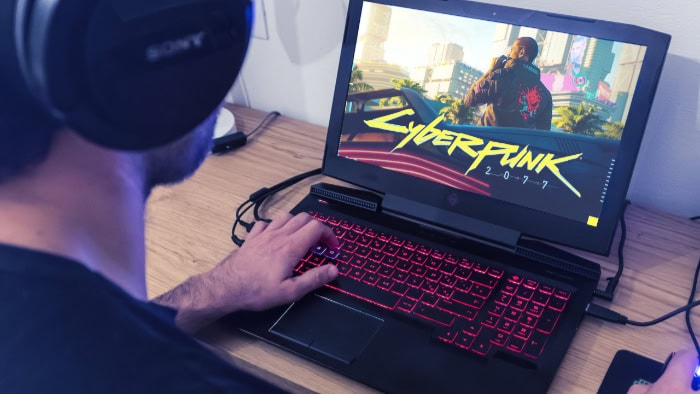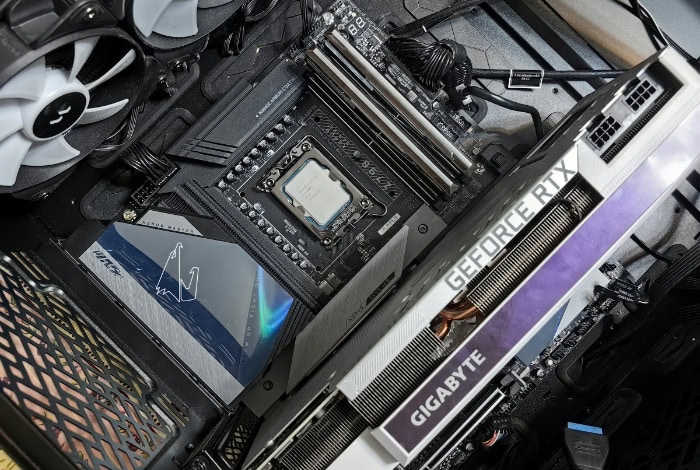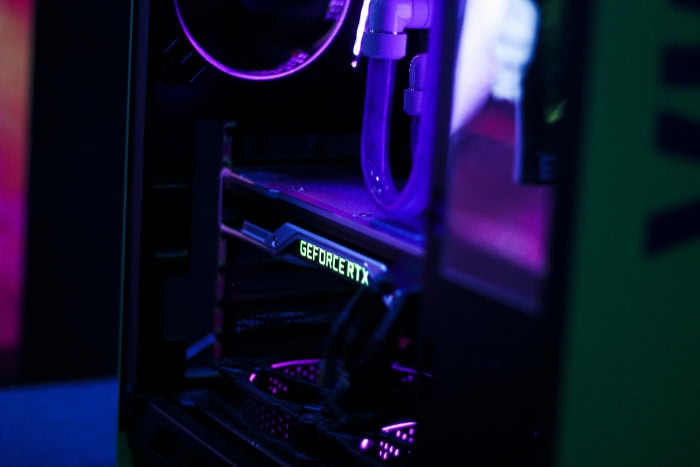What Is Nvidia DLSS? How AI Redefines Gaming Visuals

Gaming has reached an era where breathtaking visuals and immersive experiences demand more from technology than ever before. Nvidia DLSS (Deep Learning Super Sampling) has emerged as a groundbreaking solution, using advanced AI to tackle the challenges of modern rendering.
By enhancing performance and visual quality simultaneously, DLSS allows gamers to enjoy stunning graphics and fluid frame rates, even with taxing features like ray tracing enabled.
Core Technology and Purpose
DLSS stands for Deep Learning Super Sampling, a groundbreaking technology developed by Nvidia to improve the gaming experience by optimizing performance without compromising visual quality. Unlike conventional rendering methods, which rely solely on native resolution rendering, DLSS uses machine learning to reconstruct high-resolution frames from a lower resolution input.
This allows GPUs to produce sharper, clearer images while consuming fewer computational resources, enabling smoother gameplay and better responsiveness, even in graphically demanding scenarios.
At its core, DLSS aims to solve a problem that has long plagued gaming hardware: achieving the perfect balance between stunning graphics and high frame rates. By integrating an AI-driven approach, DLSS not only preserves details but intelligently enhances them, giving players an experience that closely mirrors native resolution or, in some cases, exceeds it.
Role in Modern Rendering
As gaming technology advances, the growing demand for higher resolutions and more immersive features like ray tracing has significantly increased the workload for GPUs. Rendering every individual pixel in real time at 4K or 8K resolution, particularly with ray-traced effects, can push even the most powerful graphics cards to their limits, causing frame rates to drop and performance to suffer.
DLSS addresses this challenge by introducing AI-driven neural rendering, a technique that shifts part of the rendering workload from the GPU’s brute computational power to its AI capabilities. Instead of rendering a game’s visuals at the full target resolution, DLSS starts with a lower-resolution base image and then uses artificial intelligence to reconstruct a higher-quality frame.
This approach drastically reduces the computational demand while still delivering a visually striking result that is nearly indistinguishable, or sometimes even better than native rendering.
DLSS marks a departure from traditional upscaling methods by incorporating temporal feedback and motion data. This ensures not just static image clarity, but also stability in fast-moving scenes, making it particularly effective for modern gaming environments where realism and fluidity matter most.
Evolution of DLSS
Since its introduction, DLSS has undergone significant development, continually refining its capabilities to meet the growing demands of gamers and developers. The first iteration, DLSS 1.0, was a proof-of-concept that demonstrated the potential of AI upscaling but faced criticism for its reliance on game-specific models and occasional visual artifacts.
This version required Nvidia to train its neural network individually for each game, which limited its flexibility and broad application.
The release of DLSS 2.0 marked a major turning point. With a generalized AI model capable of adapting to multiple games without separate training, DLSS 2.0 improved visual fidelity, reduced artifacts, and enhanced overall performance.
It also introduced customizable scaling modes—Quality, Balanced, and Performance—allowing gamers to choose between sharper visuals or greater frame rate improvements based on their preferences.
DLSS 3 extended the technology further, introducing Frame Generation. This feature uses AI to create entirely new frames between traditionally rendered ones, effectively doubling frame rates in supported games.
By combining Frame Generation with Nvidia Reflex to reduce input latency, DLSS 3 offered substantial performance gains with minimal trade-offs in responsiveness.
With DLSS 4.0, Nvidia has introduced even more groundbreaking capabilities, including Ray Reconstruction, an AI-powered enhancement that replaces traditional ray-tracing denoisers to improve lighting and shadow quality. Multi Frame Generation further builds on Frame Generation by analyzing multiple frames at once to deliver sharper and more consistent visuals.
These advancements demonstrate how DLSS continues to evolve, pushing the boundaries of what AI-driven rendering can achieve and setting new standards for gaming performance and visual quality.
How DLSS Works

Nvidia DLSS operates as a sophisticated AI-driven system designed to redefine real-time rendering by enhancing performance and visual fidelity. Rather than relying on traditional rendering methods that push GPUs to their limit, DLSS leverages deep learning to upscale lower-resolution images into high-resolution outputs that look nearly indistinguishable from native rendering.
This process involves several advanced techniques, including neural network training, optimized upscaling algorithms, frame interpolation, and AI-enhanced ray tracing. Together, these elements create a system that not only boosts frame rates but also improves the overall gaming experience.
AI Training Pipeline
DLSS relies on an intensive AI training process that takes place on Nvidia’s supercomputers. During training, the neural network is fed a pair of inputs: low-resolution images and their corresponding high-resolution versions that are rendered using a method called 64x supersampling.
This process generates exceptionally detailed images with pristine quality and zero aliasing, serving as the gold standard for visual clarity.
The AI model learns to recognize patterns, edges, and textures from these high-quality reference images, allowing it to predict how to reconstruct details when presented with a lower-resolution input during real-time gameplay. Once trained, the network is integrated into Nvidia GPUs, using their Tensor Cores to perform real-time inference.
As a result, DLSS can reconstruct high-resolution images dynamically with astonishing accuracy and efficiency, even in complex and fast-moving scenes.
Upscaling Techniques
What sets DLSS apart from conventional upscaling methods is its ability to incorporate temporal and spatial data for enhanced accuracy. While traditional upscaling relies solely on the information contained within a single frame, DLSS utilizes temporal feedback, which includes data from previous frames, as well as motion vectors that account for how objects move across the screen.
This additional context enables DLSS to deliver sharper textures, reduce visual artifacts, and stabilize details even in high-motion sequences, such as fast-paced action scenes or racing games.
Players can also fine-tune the DLSS experience by selecting different resolution presets, including Quality, Balanced, and Performance modes. Each mode determines the base resolution from which the image is upscaled, offering users flexibility depending on their hardware and preferences.
For example, the Quality mode prioritizes visual fidelity by using a higher base resolution, while the Performance mode emphasizes frame rate boosts for demanding scenarios, such as 4K gaming. This versatility makes DLSS adaptable to a wide range of systems and gaming environments.
Frame Generation
One of the most impressive advancements introduced in DLSS 3 is Frame Generation, which uses AI interpolation to inject entirely new frames between traditionally rendered ones. Instead of relying solely on the GPU to calculate every frame, DLSS 3 employs machine learning to predict and generate intermediary frames based on data from the previous and current frames.
This process significantly increases frame rates, giving players a smoother experience without requiring substantial additional GPU resources.
To ensure responsiveness, Frame Generation is tightly integrated with NVIDIA Reflex, a technology designed to minimize input latency. By synchronizing the rendering pipeline and eliminating bottlenecks, Reflex ensures that the additional frames produced by DLSS do not feel delayed or unresponsive.
This combination of higher frame rates and low latency makes Frame Generation a crucial feature for competitive and high-performance gaming.
Ray Reconstruction
Ray tracing has been a game-changer for realistic lighting, shadows, and reflections in video games, but its computational demands are immense. Traditional implementations use denoisers to clean up noise in ray-traced effects, but these can sometimes result in a loss of detail or overly smooth visuals.
DLSS 4 introduces Ray Reconstruction, an AI-driven solution that replaces these traditional denoisers.
Ray Reconstruction leverages deep learning to more accurately interpret the raw data from ray tracing operations, enhancing the quality of lighting, shadows, and reflections. The result is sharper, more natural visuals that better replicate how light behaves in the real world.
This improvement not only elevates the visual experience but also allows developers to implement ray tracing more efficiently, bringing cutting-edge graphics to a wider range of hardware configurations.
Benefits of DLSS

Nvidia DLSS provides a range of benefits that make it a standout technology in gaming and graphics rendering. By harnessing the power of AI, DLSS not only addresses performance bottlenecks but also enhances visual fidelity and improves overall efficiency in gaming hardware.
Performance Improvements
One of the most impressive benefits of DLSS is its ability to significantly boost frame rates in scenarios where GPUs struggle with demanding workloads, such as 4K gaming with ray tracing enabled. Instead of rendering every pixel at full resolution, DLSS reconstructs a high-resolution frame from a lower-resolution input, saving substantial GPU resources.
This approach can lead to performance gains of up to 8× in GPU-bound scenarios, enabling even mid-range hardware to tackle games with high graphical fidelity.
By alleviating the strain on GPUs, DLSS allows players to enjoy higher resolutions and settings that might otherwise be out of reach. For instance, a system that would typically struggle to maintain playable frame rates at 4K can achieve smooth performance with DLSS engaged.
This performance boost is especially beneficial for gamers seeking a balance between breathtaking visuals and fluid gameplay, particularly in resource-intensive games that leverage cutting-edge technologies like ray tracing.
Visual Enhancements
Beyond performance gains, DLSS delivers noticeable improvements in visual quality, making it a favorite for gamers who value sharpness and clarity. The AI-driven upscaling process reduces aliasing, which is the jagged edges that can appear in rendered scenes.
This results in smoother outlines, more refined textures, and an overall cleaner image.
The integration of temporal feedback further enhances the stability of visuals during motion, preventing flickering or ghosting in fast-moving scenes. This feature ensures that even the most action-packed moments remain crisp and visually engaging.
In some instances, DLSS can produce image quality that rivals or even exceeds native rendering, as its neural network reconstruction adds finer details that wouldn’t otherwise exist in the original render.
These advancements in visual fidelity make DLSS an invaluable tool for gamers who don’t want to choose between performance and aesthetics. Whether it’s subtle texture details in open-world games or the rich lighting effects in ray-traced environments, DLSS elevates the visual experience to new heights.
Efficiency Gains
In addition to boosting performance and improving visuals, DLSS contributes to greater efficiency in hardware utilization. By reducing the GPU workload during rendering, DLSS decreases overall power consumption, which helps lower heat output and prolongs the life of gaming hardware.
This efficiency allows players to game for extended periods without pushing their systems to maximum capacity, making it an excellent option for enthusiasts and casual players alike.
The reduced hardware strain also extends the relevance of older RTX GPUs, enabling users of the RTX 20 series to play modern titles with features like ray tracing and maintain respectable performance levels. By optimizing how resources are used, DLSS ensures that gamers get the most out of their systems, protecting their investment in Nvidia hardware while allowing for cutting-edge gaming experiences.
Compatibility and Requirements

DLSS has been designed to work seamlessly with Nvidia’s RTX series of GPUs, making it a highly accessible tool for gamers seeking to maximize both performance and visual fidelity. However, the effectiveness of DLSS depends on the hardware’s capabilities, software integration by developers, and the options available for resolution scaling.
Supported Hardware
DLSS is exclusively supported by Nvidia’s RTX GPUs, spanning across the 20, 30, 40, and 50 series generations. Each generation introduces improvements in how DLSS functions, thanks to advancements in hardware like Tensor Cores, which are specialized AI processors integral to running DLSS.
The RTX 20 series GPUs were the first to support DLSS, offering basic AI enhancements, while the 30 and 40 series brought significant refinements in quality and performance. With the advent of DLSS 4, the RTX 50 series GPUs are expected to deliver even greater efficiency, supporting advanced features like Multi Frame Generation and enhanced AI capabilities.
While DLSS provides substantial performance boosts across all RTX GPUs, the experience can vary depending on the graphics card’s VRAM capacity. Higher VRAM is essential for running games at ultra-high resolutions or with ray tracing enabled.
DLSS has also been optimized in its latest versions to better accommodate these demands, ensuring smoother performance for users with varying hardware configurations. Gamers with lower-tier RTX models can still achieve impressive results, but the scaling benefits are more pronounced on mid-range and high-end RTX cards.
Software Integration
For DLSS to work effectively, developers need to implement the technology into their games or applications, which is made possible through Nvidia’s dedicated SDKs (Software Development Kits). These SDKs are readily available to developers and are designed to simplify the integration process, making it possible for DLSS to support a growing number of titles.
Nvidia actively collaborates with game developers to ensure that DLSS is optimized for their games, resulting in smoother gameplay and sharper visuals.
DLSS has already been integrated into a variety of popular games and applications, with flagship titles such as Cyberpunk 2077 and Alan Wake 2 showcasing its potential. These games take full advantage of DLSS features, allowing players to enjoy high frame rates and stunning ray-traced effects.
The presence of DLSS in these visually demanding titles highlights its value as a tool for handling modern gaming workloads. As adoption continues to expand, more games are expected to support DLSS out of the box, enhancing accessibility for a wider audience.
Resolution and Preset Options
DLSS offers multiple resolution scaling presets to cater to users with diverse preferences and hardware capabilities. These presets (Quality, Balanced, Performance, and Ultra Performance) determine the starting resolution that is upscaled to the target resolution.
For example, the Quality mode prioritizes visual fidelity by using a higher base resolution, making it ideal for gamers playing at 1440p or 4K. On the other hand, the Performance mode lowers the base resolution significantly, offering a substantial boost in frame rates while maintaining acceptable image quality.
For extreme scenarios, such as 8K gaming, Ultra Performance mode is specifically designed to achieve high frame rates by dramatically reducing the base resolution before upscaling. This mode is particularly useful for players who want to push their systems to the limit, as it allows for smooth gameplay even at such demanding resolutions.
These options make DLSS adaptable, providing a tailored experience that aligns with the user’s hardware and desired balance between performance and visual quality.
Comparisons and Limitations

While Nvidia DLSS is widely praised for its ability to enhance gaming performance and visuals using AI, it is not the only upscaling technology available. Competing solutions like AMD FSR (FidelityFX Super Resolution) and Intel XeSS also aim to deliver better frame rates and image quality, albeit with different approaches.
At the same time, DLSS is not without its challenges, from potential trade-offs in visual quality to its hardware exclusivity.
DLSS vs. Competing Technologies
DLSS’s main competitors are AMD FSR and Intel XeSS, which also seek to improve gaming performance through upscaling, but their design philosophies and results differ. AMD’s FSR stands out for being open-source and compatible with a wide range of GPUs, including older AMD and even Nvidia graphics cards.
This broader hardware support makes FSR an attractive option for gamers who do not own Nvidia RTX GPUs. However, FSR lacks the temporal stability and advanced AI-driven techniques that DLSS leverages, resulting in less consistent image quality, particularly in fast-moving scenes where artifacts or shimmering may become noticeable.
Intel XeSS, on the other hand, shares some similarities with DLSS through its use of AI, but it is still in its early stages compared to Nvidia’s established technology. XeSS aims to bring AI-enhanced upscaling to both Intel and non-Intel GPUs, but its adoption has been slower, and its performance and visual fidelity lag behind DLSS in most cases.
While XeSS shows promise, it does not yet match the refinement and robustness offered by DLSS, especially in games that demand high levels of detail or utilize advanced features like ray tracing.
Overall, DLSS maintains its edge thanks to its proprietary AI training pipeline and specialized Tensor Cores, which enable unparalleled performance gains and superior image reconstruction. Its competitors may offer broader compatibility, but they often fall short in delivering the same level of visual and temporal precision.
Trade-offs and Challenges
Though DLSS is a remarkable achievement, earlier versions of the technology faced criticism for certain trade-offs that affected image quality. Ghosting and visual artifacts, such as blurry textures or pixel flickering, were common issues in DLSS 1.0. These problems have been addressed and significantly reduced in subsequent versions, with DLSS 3 and 4 introducing more advanced algorithms and temporal data processing for smoother and clearer visuals.
One challenge introduced with DLSS 3 is the potential impact of Frame Generation on input latency. Since Frame Generation adds new, AI-generated frames rather than rendering them traditionally, there can be a slight lag in how quickly the system responds to player inputs.
Nvidia has mitigated this concern by incorporating Reflex, a technology designed to reduce latency and keep gameplay responsive, even when Frame Generation is active. While Reflex effectively minimizes delays for most players, those in competitive gaming who require the fastest response times may still prefer to disable Frame Generation to prioritize lower latency.
Trade-offs like these highlight how DLSS continues to evolve, balancing performance gains with the need for visual and input quality. Each new version resolves earlier limitations while pushing the boundaries of what the technology can achieve.
Hardware Exclusivity
One of the most significant limitations of DLSS is its exclusivity to Nvidia’s RTX GPUs. As the technology relies on dedicated Tensor Cores for real-time AI processing, it cannot run on older Nvidia GPUs or graphics cards from other manufacturers.
This exclusivity contrasts with AMD FSR and Intel XeSS, which are designed to work across a wider range of hardware, including integrated GPUs and older generations of graphics cards.
While this limitation ensures that DLSS offers unmatched performance for RTX GPU owners, it also restricts its accessibility. Gamers who use AMD GPUs, Intel GPUs, or older Nvidia cards must rely on alternative upscaling technologies like FSR or XeSS, even if they deliver less polished results.
This hardware lock-in has garnered some criticism, particularly as both AMD and Intel adopt more open, inclusive approaches to their technologies.
Despite this, Nvidia’s focus on its RTX ecosystem allows DLSS to take full advantage of its proprietary architecture, delivering performance and visual fidelity that those outside the Nvidia platform currently cannot match. However, hardware exclusivity remains a factor that separates DLSS from its competitors and limits its reach within the broader gaming community.
Conclusion
Nvidia DLSS has redefined what is possible in gaming and graphics rendering by combining AI innovation with practical applications for performance and visual enhancement. Its ability to boost frame rates, improve image quality, and optimize hardware efficiency has made it an essential tool for gamers and developers alike.
From its advancements in Frame Generation and Ray Reconstruction to its adaptability across resolution presets, DLSS continues to push the boundaries of modern rendering while making cutting-edge visuals accessible to a broader audience.
Although alternative upscaling technologies like AMD FSR and Intel XeSS offer unique strengths, DLSS remains the leader in delivering a sophisticated blend of performance and fidelity. Its evolution demonstrates a commitment to addressing challenges and expanding possibilities within the gaming industry.
As games grow more graphically demanding, technologies like DLSS will play a vital role in ensuring that stunning visuals and smooth gameplay are not just achievable but expected in the world of gaming.


